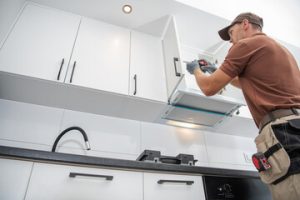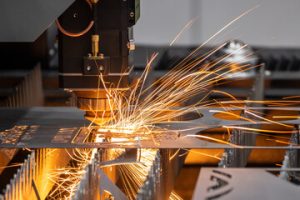Pomsky is a small creature with the spirit of a storm and the charm of a whisper. Its presence carries the soft balance between power and gentleness. This tiny being often steals attention without trying. Each glance reveals the blend of two worlds wrapped in fur and playfulness.

The Pomsky’s origin lies in the union of contrast, where strength meets grace. It carries a history built on curiosity and admiration for what could exist between the mighty and the delicate. Its size might fool the eye, yet its energy can fill an entire room. Beneath its beauty lies a streak of confidence that demands notice.
Many people fall in love with a Pomsky’s gaze before they understand its nature. That innocent look hides a clever mind eager for challenge and play. It’s not just a pet but a personality made of layers. Every twitch of its ear feels like a statement of awareness and charm.
The Pomsky moves like a ripple of light, unpredictable yet graceful. Its fur reflects shades that seem to shift under the sun, revealing tones that capture the imagination. The mix of coat patterns makes each one unique. Its form is never quite the same, always carrying mystery in its beauty.
Beneath the adorable surface lies boundless energy. This little being can move for hours, chasing invisible trails or simply exploring every corner. It craves adventure as much as affection. Those who share their space with one soon learn that silence rarely lasts long.
Training a Pomsky is a dance between patience and admiration. Its intelligence shines through with quick understanding but also with stubborn pride. It learns fast yet questions commands with curious defiance. Each session feels like a test of connection rather than control.
Their loyalty is unshakable once trust is earned. They build attachment like a silent promise that deepens over time. This connection goes beyond obedience; it’s emotional. They sense moods, mirror feelings, and offer presence as comfort.
A Pomsky’s voice can surprise anyone. It carries tone and rhythm as if expressing thoughts through sound. Sometimes it’s playful chatter, other times a sharp alert. It doesn’t bark to fill the air but to communicate a reason.
Grooming such beauty takes commitment and care. Its coat demands attention to remain soft and luminous. Each brush stroke becomes a moment of quiet bonding. Through grooming, the Pomsky learns to enjoy touch as trust deepens.
Living with a Pomsky means learning rhythm and patience. They rise early with bursts of excitement, ready to explore or cuddle. Their energy requires guidance through daily activities. Without structure, their curiosity can turn into mischief.
These dogs thrive on company and struggle in solitude. When left alone for long periods, they express longing through restlessness. Companionship feeds their balance. They flourish in homes filled with engagement and affection.
The diet of a Pomsky shapes both its appearance and health. Proper nourishment keeps its coat shining and energy steady. They often prefer food rich in nutrients and flavor. Maintaining a balanced diet prevents mood swings and fatigue.
Their health needs careful observation because of their mixed genetics. They inherit traits from both parents, good and challenging alike. Regular checkups help detect subtle issues before they grow. Responsible care ensures long, joyful years together.
Pomskies adapt easily to different environments but prefer consistency. They enjoy spaces that allow movement without chaos. A quiet home filled with warmth suits them well. Yet they also shine in outdoor play, where their true spirit unfolds.
The emotional intelligence of a Pomsky can astonish even experienced owners. It reads emotions like open books. When sadness lingers, it stays close. When laughter fills the room, it joins with playful jumps and wagging delight.
They have an almost childlike curiosity about everything new. A falling leaf or moving shadow can trigger fascination. This wonder keeps their spirit forever young. It also keeps their humans entertained with endless antics.
As they mature, Pomskies maintain a spark that never fades. Their playfulness evolves into gentle companionship. They shift from energetic explorers to calm observers, content beside their humans. Age may slow their steps but never their heart.
In colder months, their thick fur becomes a cozy shield. They revel in soft breezes and cool air, moving gracefully through crisp mornings. In warmer weather, they seek shade and water. Their adaptability is a quiet reflection of balance within duality.
Socializing a Pomsky shapes its confidence. They learn quickly how to interact with others, both human and canine. Early exposure builds trust and reduces fear. A well-socialized Pomsky greets the world with confidence instead of caution.
Their charm often draws admiration wherever they go. Strangers stop, eyes softening at their sight. Yet they remain selective about affection, choosing who earns their warmth. Their attention feels like a reward for kindness and patience.
Pomskies are known for their expressions that seem almost human. Their eyes hold thought and feeling in perfect sync. A tilt of the head, a sigh, or a gentle paw touch speaks volumes. It’s this emotional fluency that bonds them deeply with people.
Raising a Pomsky requires consistency and empathy. Harsh discipline rarely works, but positive guidance builds respect. They respond best to encouragement and mutual understanding. Training becomes smoother when trust is the foundation.
A Pomsky’s sleep habits reveal much about its comfort. When at ease, it curls into the smallest space possible. When anxious, it paces and searches for reassurance. Owners learn to read these cues as part of daily connection.
Each Pomsky has its quirks that make it unforgettable. Some have a peculiar way of tilting their head, others a unique bark tone. These tiny details add to their individuality. No two Pomskies ever seem truly alike.
They fit beautifully into families that value harmony. Their sensitivity helps them adapt to various temperaments around them. They comfort children, bond with adults, and coexist peacefully with other pets. Their energy becomes a bridge of shared happiness.
Beyond appearance, the Pomsky’s heart defines its essence. Its love is pure, constant, and forgiving. It doesn’t demand perfection, only attention and sincerity. In return, it gives unguarded affection that feels timeless.
Some people see them as symbols of balance between strength and gentleness. They carry the spirit of two lineages yet belong fully to neither. This in-betweenness creates their magic. It’s what makes every Pomsky both mysterious and endearing.
Their adaptability extends beyond lifestyle. They can live in small spaces or wide open areas. What matters most is engagement and connection. A Pomsky thrives where it feels seen and valued.
Even their rest is expressive, filled with soft sighs and twitching dreams. They seem to relive their playful adventures in sleep. Watching them rest brings peace to anyone nearby. It’s as if they carry calmness within their tiny hearts.
When danger or discomfort appears, their instincts awaken sharply. They become protective despite their size. Their alertness can rival larger breeds, proving courage isn’t measured in height. They guard not just homes but emotions.
Pomskies are storytellers through motion. Every jump, chase, or cuddle expresses emotion. Their behavior reflects their environment’s energy. Calm homes produce peaceful Pomskies, while chaotic ones amplify their excitement.
Caring for a Pomsky becomes a long-term commitment filled with joy and discovery. It teaches patience, empathy, and consistency. Their journey mirrors human growth—full of learning, mistakes, and progress. Through it all, they remain faithful companions.
Many owners describe life with a Pomsky as unexpectedly transformative. Their presence changes routines, priorities, and even moods. They bring lightness where stress once lingered. It’s as if their laughter echoes through every wag and bark.
Their compact size hides a personality that could fill the horizon. They challenge expectations of what small dogs can be. Every interaction feels significant, carrying emotional weight. The connection they build feels more human than animal.
As time passes, that bond grows deeper and more intuitive. Owners begin to understand without words. The relationship evolves into silent companionship built on mutual awareness. It’s love translated through looks and gestures.
In moments of quiet, a Pomsky might curl beside its human with soft contentment. That simple act becomes an unspoken conversation. It’s a reminder of trust earned and love reciprocated. Every heartbeat between them tells a shared story.
The Pomsky continues to capture hearts not just for its beauty but for its depth. Beneath every soft bark lies a story of heritage, affection, and instinct. It’s a creation of contrast that somehow feels whole. And in that balance, its charm remains eternal.
No matter how trends shift, the allure of the Pomsky endures. People may seek it for its look but stay for its soul. It represents connection that transcends words. In its presence, even silence feels meaningful.
That is the true cost of loving a Pomsky—not measured in coins but in commitment. It asks for time, understanding, and care. Yet what it gives in return outweighs everything material. It gives companionship that feels like home in motion.
The Pomsky reminds the world that beauty can carry spirit, and gentleness can house power. In every wag and every stare lies a spark of northern light. It flickers not to impress but to belong. And in that quiet brilliance, it forever leaves a mark.




